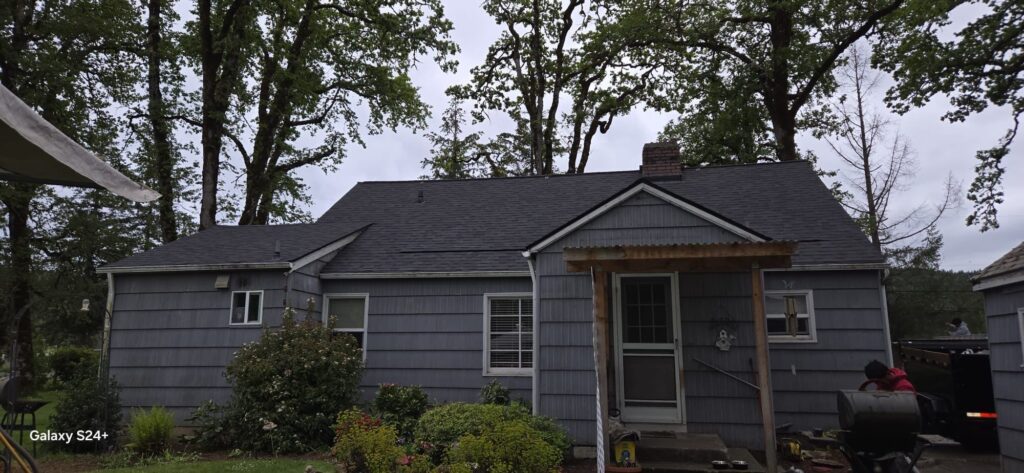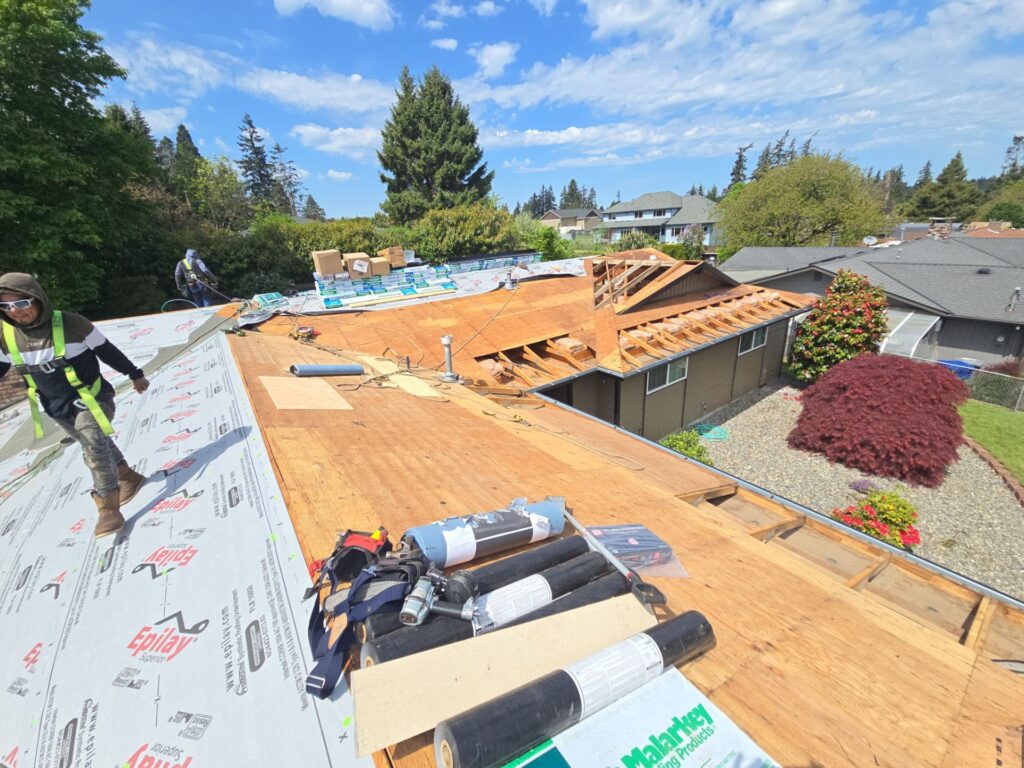Ever found yourself wondering why two roofers can quote drastically different prices for the same job? If you’re planning a roof replacement or roof installation, understanding what goes into the labor cost for roofing can make a big difference in how confidently and cost-effectively you move forward.
Roofing labor cost per square isn’t just a number pulled out of thin air. It’s shaped by the size and shape of your roof, the type of materials you choose, and even where you live. For example, labor costs in urban areas like Vancouver where Expert Roofing in Vancouver operates might differ significantly from those in more rural towns.
In this post, you’ll learn what a roofing “square” actually means, how pricing is calculated, and what smart homeowners can do to get accurate estimates before committing to a contractor. Whether you're hiring locally or comparing regional options, this breakdown will help you budget wisely.
Ready to take the guesswork out of roofing labor costs? Let’s get into it.
If you're getting quotes from roofing companies, you'll probably hear the term "square" come up again and again. It’s not a fancy calculation it’s simply a way pros measure roof size. One roofing square equals 100 square feet of area. It helps keep estimates clear and consistent.
So, let’s say your new roof will cover 2,000 square feet. That means your contractor is working with 20 squares. Whether you’re replacing a roof with asphalt shingle or metal roofing, this unit makes pricing easier to understand and compare.
Understanding this helps you talk confidently with a roofing contractor when discussing the cost to replace a roof, labor charges, or the total cost of the project.

If you're wondering how much the actual work will cost, the average labor cost per square in 2025 ranges from $150 to $300. Keep in mind, that’s just for the labor not the materials.
Let’s break it down with an example. Say your contractor quotes $200 per square for labor and $250 per square for materials like shingles or underlayment. You’re now looking at $450 per square for a full roof installation. Multiply that by your roof’s size (remember, each square is 100 square feet), and you’ll get a much clearer picture of the total cost.
That number can go up or down depending on your roof needs. A simple shingle roof on a single-story home will cost less than a tile roof on a tall, multi-level property. Roof replacement costs are all about the details especially when it comes to labor.
The more square footage your roof has, the more labor it takes. But it’s not just about size. A roof with odd angles, skylights, or lots of valleys takes longer to work on than a simple, flat layout.
For instance, replacing a roof on a ranch-style home might be faster and cheaper than working on a Victorian-style house with turrets and sharp peaks.
The steeper the slope, the more time and caution the crew needs. A roof with a gentle angle is easier to move around on. But if your roof feels more like a mountain, the extra safety measures and slow pace will increase labor costs.
It’s also about how easy it is to get up there. If your home is surrounded by landscaping, fences, or has limited driveway access, expect slightly higher labor costs.
Some materials are just more labor-intensive. Asphalt shingles are quick to install and common roofing material for a reason they're cost-effective and straightforward. Metal roofing takes longer because of its precise alignment. A tile roof? That’s heavy work and needs careful placement to avoid breakage.
So, while the type of roof you choose plays a role in your home’s look and durability, it also affects how long the job will take and how much you’ll pay in labor.
Labor rates don’t look the same in every city. A roofing job in a big city like Vancouver might cost more than one in a smaller town simply due to local wage standards and availability of roofing contractors.
If you're replacing a roof in a region where skilled trades are in short supply, expect to pay more per square foot. It's worth comparing a few quotes based on your zip code.
If your roof has layers of old roofing material, those need to come off first. This adds time and effort. Some homes even have surprise issues like soft decking or water damage underneath the shingles, which can drive up the labor cost.
A roof inspection before you sign anything helps spot these issues ahead of time so your replacement cost doesn't balloon mid-project.
Asphalt shingles are the go-to choice for many homeowners because they’re quick to install and easier on the budget. The labor to install asphalt shingle roofing tends to be the most affordable, making it a smart option if you’re looking to replace your roof without stretching your wallet too far.
Think of a simple one-story home getting a new asphalt shingle roof. A reputable roofing contractor could finish the job in a few days, which keeps labor costs down. That’s one reason why this material remains popular for first-time roof buyers and house flippers alike.
Metal roofing adds a modern look and lasts a long time, but it does require more careful installation. Standing seam metal roofs, in particular, involve precise alignment and special tools, which naturally adds to the labor cost.
If you’re investing in a new metal roof, especially in climates with heavy rain or snow, this added labor pays off through durability. But be ready: the labor alone can cost more than $300 per square, depending on your roof size and style. It’s a bigger investment upfront, but many homeowners find it’s worth it in the long run.
Tile roofs, whether clay, concrete, or slate are heavy, which means they take more time and skill to install properly. Labor costs are higher here, not just because of the extra effort, but also because the weight requires careful placement to protect the roof deck underneath.
Imagine replacing an old roof with slate tile on a custom-built home. The roof slope, tile fragility, and structural demands all mean higher labor to install. But for homeowners wanting that premium, timeless look, the added cost often feels like a fair trade.
Specialty materials vary a lot. Some synthetic shingles mimic natural materials like cedar or slate but weigh less and go on faster. Others require factory-trained crews to meet warranty standards.
A homeowner might opt for a designer roof system to improve curb appeal and resale value. Depending on the roofing material you choose, labor can fluctuate widely sometimes from $250 to $400 per square or more. This is one area where getting your roof evaluated by a specialist makes all the difference.

Sometimes, you’re only paying for labor like when insurance covers materials, or if you've already purchased your roofing supplies. Other times, it’s a full-service job from tear-off to clean-up.
Here’s a typical breakdown:
Knowing these numbers upfront helps avoid sticker shock. A good contractor will show you an itemized cost estimate so you can see what you’re paying for whether it’s the cost to install flashing, the removal of old roofing, or roof underlayment.
Before you sign anything, get a real inspection. An experienced roofer can spot hidden issues, like a soft roof deck or signs of rot, which could affect the cost of labor or repairs later.
Ask each contractor to break down the price of the roofing job. This includes labor, tear-off, underlayment, flashing, nails, and any extras. That way, you’re not guessing what you’re paying for and you can compare apples to apples.
The more you ask, the fewer surprises later. Is cleanup included? What’s your labor warranty? How long will it take? And is this a fixed cost or hourly rate? These simple questions help you spot whether someone is a reputable roofing contractor or not.
You don’t have to cut corners to control costs. Start by getting at least two or three bids. Labor rates can vary, and shopping around may reveal big differences. Timing also helps. If you can, plan your project during slower months, roofing companies may offer better deals then.
Combining services can also reduce your final price. For example, scheduling new gutters along with your new roof saves on setup time and mobilization fees. And in some cases, you might be allowed to install a new layer of shingles over an existing one, cutting tear-off labor. Just be sure your local building codes allow it.
Before you agree to any roofing project, make sure your contractor is licensed and fully insured. This isn’t just about following the rules, it’s about protecting yourself if something goes wrong. For example, if a worker gets hurt while removing the old roofing and the contractor isn’t covered, that responsibility could fall on you. A reputable roofing contractor like IBEX Roof always provides this information upfront, giving you peace of mind from day one.
Online reviews can tell you a lot about how a company treats its customers, but it’s even better to talk to people who’ve had their roof replaced or repaired. Ask for references and don’t hesitate to call them. One homeowner shared how they chose a company based on a neighbor’s referral and it made all the difference when unexpected weather delayed the project. Knowing the contractor had a reputation for communication and follow-through helped ease the stress.
Not all labor warranties are the same. Some cover you for just a year or two, while others last a decade or more. Ask what’s included, how long it lasts, and what happens if your roof starts showing signs of wear. A strong warranty isn’t just a piece of paper, it’s a sign the company stands behind their work. When you're spending thousands on your roof, it's worth knowing you're protected long after the last shingle is installed.
Labor typically covers tearing off old materials, preparing the surface, installing the new roof, and cleaning up the site afterward. But always double-check your estimate, some companies might list disposal or permits separately.
Most contractors charge by the square for full installations. If it’s a small roof repair or prep work, they might quote hourly. It depends on the size of your roof and the scope of the job.
You can expect anywhere from $400 to $700 per square, depending on the type of roofing material, roof complexity, and local labor rates. That covers both materials and labor, but prices vary, especially if you're installing a new metal roof or cedar shake.
In many cases, yes. Rural areas tend to have lower labor costs due to less competition and lower cost of living. But that also means fewer roofing companies to choose from, so you’ll want to start planning early.
Your roof is a significant investment, so it makes sense to understand what goes into every dollar you're spending. Knowing the average cost of a new roof, what labor alone might run per square, and how different roofing options affect price helps you avoid surprises.
When you’re buying a new roof, whether it's asphalt, metal, tile, or synthetic take time to compare quotes, review contractor credentials, and understand what’s included. Remember, the cost per square foot to replace isn’t just about the price. It's also about the quality of the work, the protection it offers your home, and how long it will last.
If you’re ready to get started, reach out for an estimate. It’s the first step toward making sure your roof will increase your home’s comfort, value, and reliability for years to come.